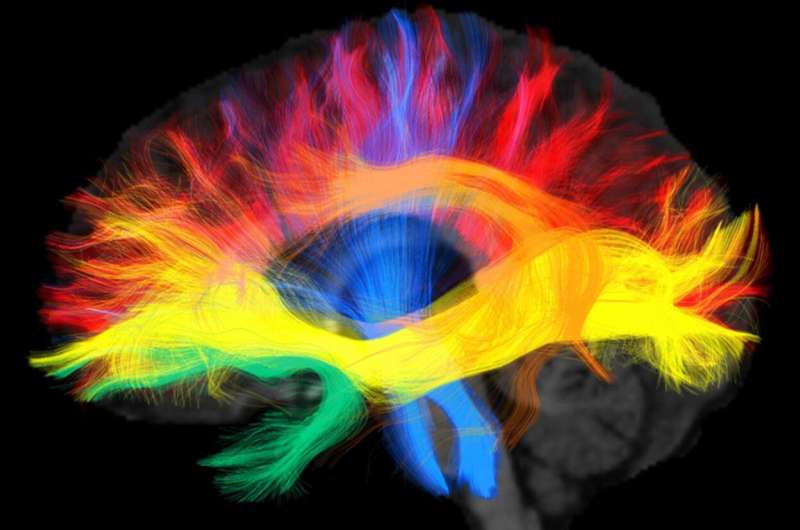fact-checked
peer-reviewed publication
trusted source
proofread
Learn more about outeditorial processandpoliciesStudy examines how our native language shapes our brain wiring

Scientists at the Max Planck Institute for Human Cognitive and Brain Sciences in Leipzig have found evidence that the language we speak shapes the connectivity in our brains that may underlie the way we think. With the help of magnetic resonance tomography, they looked deep into the brains of native German and Arabic speakers and discovered differences in the wiring of the language regions in the brain.
Xuehu Wei, who is a doctoral student in the research team around Alfred Anwander and Angela Friederici, compared thebrain scansof 94native speakersof two verydifferent languagesand showed that the language we grow up with modulates the wiring in the brain. Two groups of native speakers of German and Arabic respectively were scanned in a磁资源nanceimaging (MRI) machine.
The high-resolution images not only show the anatomy of the brain, but also allow to derive the connectivity between thebrain areasusing a technique called diffusion-weighted imaging. The data showed that the axonal white matter connections of the language network adapt to the processing demands and difficulties of the mother tongue.
"Arabic native speakers showed a stronger connectivity between the left and right hemispheres than German native speakers," explained Alfred Anwander, last author of the study that was recently published in the journalNeuroImage. "This strengthening was also found between semantic language regions and may be related to the relatively complex semantic and phonological processing in Arabic."
As the researchers discovered, native German speakers showed stronger connectivity in the left hemisphere language network. They argue that their findings may be related to the complex syntactic processing of German, which is due to the free word order and greater dependency distance of sentence elements.
"Brain connectivity is modulated by learning and the environment during childhood, which influences processing and cognitive reasoning in the adult brain. Our study provides new insights how the brain adapts to cognitive demands, that is, the structurallanguageconnectome is shaped by the mother tongue," said Anwander.
This is one of the first studies to document differences between the brains of people who grew up with different native languages and could give researchers a way to understand cross-cultural processing differences in the brain. In a next study, the research team will analyze longitudinal structural changes in the brains of Arabic-speaking adults as they learn German over six months.
更多的信息:Xuehu Wei et al, Native language differences in the structural connectome of the human brain,NeuroImage(2023).DOI: 10.1016/j.neuroimage.2023.119955



















